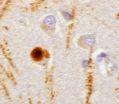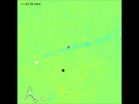(Press-News.org) Washington, DC (June 12, 2014) – We know it too well. We are watching a horror film and the antagonist is about to maim a character; we ball up, get ready for the shot and instead of turning away, we lean forward in the chair, then flinch and cover our eyes – Jason strikes again! But what is going on in our body that drives us to this reaction, and why do we engage in it so readily? Recent research published in the Journal of Communication found that people exposed to core disgusts (blood, guts, body products) showed higher levels of attention the more disgusting the content grew even though they had negative reactions to the content.
Bridget Rubenking, University of Central Florida, and Annie Lang, Indiana University, published their findings in the Journal of Communication from an experiment with 120 participants. Participants watched TV/film clips of three distinct types of disgust: socio-moral, body product and death/gore. Rubenking and Lang measured participants' heart rate, facial expressions and skin moisture. After viewing they tested participants' memory for scenes presented in the messages; examined differences in individuals' memory and physiological levels of activity from before the onset of disgust in each clip to time points immediately after; and then compared the data across disgust types.
The findings suggested that socio-moral disgust-eliciting content elicited a slower response, characterized by one of initial attention and increasing negativity and arousal, and was remembered better before, at and after the onset of disgust. Both core disgusts saw more of an immediate negativity and defensive response. Body product disgusts in particular showed an initial defensive response pattern: Instead of eliciting immediate attention, the onset of body product disgusts elicited sharp increases in negativity and arousal, and an acceleration of heart rate, indicating that the content was at first too disgusting to pay attention to. Memory for content before the onset of disgust in the core disgust messages was at near-chance levels – indicating that the disgust onset served as a cognitive interrupt and made participants forget what they had seen before it.
Memory improved at and after disgust onset across all disgust types, and heart rate showed a deeper deceleration over time, showing more attention being paid to the content. Together this data suggests that despite being fully aware of how disgusted they were, participants could not turn away from any of the disgusting content, and actually paid more attention the more disgusting the content got. This pattern was especially pronounced in response to the core disgusts.
"We often choose to view entertainment media to simply make ourselves feel good, and we also likely often choose entertainment media that will provide meaning, fulfillment and spark introspection. Despite whatever motives encouraged the decision to watch or not watch, this study demonstrates that when we're watching entertainment content that introduces specific types of disgust, our bodies react as being disgusted, and we can articulate that we are disgusted by the content," said Rubenking. "However, we pay more attention once disgust is introduced and we remember the content with disgust better, making it a smart device for content creators to use, in moderation."
INFORMATION:
This study is part of a special issue of the Journal of Communication focused on expanding the boundaries of entertainment research. The special issue was edited by ICA Fellow Mary Beth Oliver and Arthur A. Raney. The complete issue is available for free here: http://onlinelibrary.wiley.com/doi/10.1111/jcom.2014.64.issue-3/issuetoc
Captivated and Grossed Out: An Examination of Processing Core and Sociomoral Disgusts in Entertainment Media, By Bridget Rubenking and Annie Lang; Journal of Communication DOI: 10.1111/jcom.12094
http://onlinelibrary.wiley.com/doi/10.1111/jcom.12094/abstract
Contact: To schedule an interview with the author or obtain a copy of the research, please contact John Paul Gutierrez, jpgutierrez@icahdq.org.
About ICA
The International Communication Association is an academic association for scholars interested in the study, teaching, and application of all aspects of human and mediated communication. With more than 4,300 members in 80 countries, ICA includes 27 divisions and interest groups and publishes the Communication Yearbook and five major, peer-reviewed journals: Journal of Communication, Communication Theory, Human Communication Research, Communication, Culture & Critique, and the Journal of Computer-Mediated Communication. For more information, visit http://www.icahdq.org.
Movies with gory and disgusting scenes more likely to capture and engage audience
Disgusting socio-moral messages less likely to cause immediate reactions
2014-06-12
ELSE PRESS RELEASES FROM THIS DATE:
NASA takes Tropical Cyclone Nanuak's temperature
2014-06-12
Tropical Cyclone Nanauk is holding its own for now as it moves through the Arabian Sea. NASA's Aqua satellite took its cloud top temperatures to determine its health.
In terms of infrared data viewing tropical cyclones, those with the coldest cloud top temperatures indicate that a storm is the most healthy, most robust and powerful. That's because thunderstorms that have strong uplift are pushed to the top of the troposphere where temperatures are bitter cold. Infrared data, such as that collected from the Atmospheric Infrared Sounder (AIRS) instrument that flies aboard ...
Findings point toward one of first therapies for Lou Gehrig's disease
2014-06-12
CORVALLIS, Ore. – Researchers have determined that a copper compound known for decades may form the basis for a therapy for amyotrophic lateral sclerosis (ALS), or Lou Gehrig's disease.
In a new study just published in the Journal of Neuroscience, scientists from Australia, the United States (Oregon), and the United Kingdom showed in laboratory animal tests that oral intake of this compound significantly extended the lifespan and improved the locomotor function of transgenic mice that are genetically engineered to develop this debilitating and terminal disease.
In humans, ...
Scientists identify Deepwater Horizon Oil on shore even years later, after most has degraded
2014-06-12
Years after the 2010 Deepwater Horizon Oil spill, oil continues to wash ashore as oil-soaked "sand patties," persists in salt marshes abutting the Gulf of Mexico, and questions remain about how much oil has been deposited on the seafloor. Scientists from Woods Hole Oceanographic Institution and Bigelow Laboratory for Ocean Sciences have developed a unique way to fingerprint oil, even after most of it has degraded, and to assess how it changes over time. Researchers refined methods typically used to identify the source of oil spills and adapted them for application on a ...
Anti-dsDNA, surface-expressed TLR4 and endosomal TLR9 cooperate to exacerbate lupus
2014-06-12
Systemic lupus erythematosus (SLE) is a complicated multifactorial autoimmune disease influenced by many genetic and environmental factors. The hallmark of systemic lupus erythematosus (SLE) is the presence of high levels of anti-double-stranded DNA autoantibody (anti-dsDNA) in sera. In addition, greater infection rates are found in SLE patients and higher morbidity and mortality usually come from bacterial infections. Deciphering interactions between the susceptibility genes and the environmental factors for lupus complex traits is challenging and has resulted in only ...
Protein anchors help keep embryonic development 'just right'
2014-06-12
The "Goldilocks effect" in fruit fly embryos may be more intricate than previously thought. It's been known that specific proteins, called histones, must exist within a certain range—if there are too few, a fruit fly's DNA is damaged; if there are too many, the cell dies. Now research out of the University of Rochester shows that different types of histone proteins also need to exist in specific proportions. The work further shows that cellular storage facilities keep over-produced histones in reserve until they are needed.
Associate Professor of Biology Michael Welte ...
Penn study describes new models for testing Parkinson's disease immune-based drugs
2014-06-12
PHILADELPHIA - Using powerful, newly developed cell culture and mouse models of sporadic Parkinson's disease (PD), a team of researchers from the Perelman School of Medicine at the University of Pennsylvania, has demonstrated that immunotherapy with specifically targeted antibodies may block the development and spread of PD pathology in the brain. By intercepting the distorted and misfolded alpha-synuclein (α-syn) proteins that enter and propagate in neurons, creating aggregates, the researchers prevented the development of pathology and also reversed some of the ...
Viral infections, including flu, could be inhibited by naturally occurring protein
2014-06-12
PITTSBURGH, June 12, 2014 – By boosting a protein that naturally exists in our cells, an international team of researchers led by the University of Pittsburgh Cancer Institute (UPCI), partner with UPMC CancerCenter, has found a potential way to enhance our ability to sense and inhibit viral infections.
The laboratory-based discovery, which could lead to more effective treatments for viruses ranging from hepatitis C to the flu, appears in the June 19 issue of the journal Immunity. The research is supported by the National Institutes of Health.
"Despite remarkable advances ...
African-Americans respond better to first-line diabetes drug than whites
2014-06-12
Washington, DC—African Americans taking the diabetes drug metformin saw greater improvements in their blood sugar control than white individuals who were prescribed the same medication, according to a new study published in the Endocrine Society's Journal of Clinical Endocrinology & Metabolism (JCEM).
An estimated 29 million Americans have diabetes. African Americans are twice as likely to be diagnosed with diabetes as whites and have a higher rate of complications such as kidney failure, according to the U.S. Department of Health and Human Services' Office of Minority ...
Brain power
2014-06-12
VIDEO:
Real-time movie of changes in total hemoglobin in the brain during stimulation. The initial blush of the brain is followed quickly by dilation (red) of arteries on the brain's surface....
Click here for more information.
New York, NY—June 12, 2014—In a new study published online in the Journal of the American Heart Association June 12, 2014, researchers at Columbia Engineering report that they have identified a new component of the biological mechanism that controls ...
Time-lapse study reveals bottlenecks in stem cell expansion
2014-06-12
A time-lapse study of human embryonic stems cells has identified bottlenecks restricting the formation of colonies, a discovery that could lead to improvement in their use in regenerative medicine.
Biologists at the University of Sheffield's Centre for Stem Cell Biology led by Professor Peter Andrews and engineers in the Complex Systems and Signal Processing Group led by Professor Daniel Coca studied human pluripotent stem cells, which are a potential source of cells for regenerative medicine because they have the ability to produce any cell type in the body.
However, ...
LAST 30 PRESS RELEASES:
Interaction of climate change and human activity and its impact on plant diversity in Qinghai-Tibet plateau
From addressing uncertainty to national strategy: an interpretation of Professor Lim Siong Guan’s views
Clinical trials on AI language model use in digestive healthcare
Scientists improve robotic visual–inertial trajectory localization accuracy using cross-modal interaction and selection techniques
Correlation between cancer cachexia and immune-related adverse events in HCC
Human adipose tissue: a new source for functional organoids
Metro lines double as freight highways during off-peak hours, Beijing study shows
Biomedical functions and applications of nanomaterials in tumor diagnosis and treatment: perspectives from ophthalmic oncology
3D imaging unveils how passivation improves perovskite solar cell performance
Enriching framework Al sites in 8-membered rings of Cu-SSZ-39 zeolite to enhance low-temperature ammonia selective catalytic reduction performance
AI-powered RNA drug development: a new frontier in therapeutics
Decoupling the HOR enhancement on PtRu: Dynamically matching interfacial water to reaction coordinates
Sulfur isn’t poisonous when it synergistically acts with phosphine in olefins hydroformylation
URI researchers uncover molecular mechanisms behind speciation in corals
Chitin based carbon aerogel offers a cleaner way to store thermal energy
Tracing hidden sources of nitrate pollution in rapidly changing rural urban landscapes
Viruses on plastic pollution may quietly accelerate the spread of antibiotic resistance
Three UH Rainbow Babies & Children’s faculty elected to prestigious American Pediatric Society
Tunnel resilience models unveiled to aid post-earthquake recovery
Satellite communication systems: the future of 5G/6G connectivity
Space computing power networks: a new frontier for satellite technologies
Experiments advance potential of protein that makes hydrogen sulfide as a therapeutic target for Alzheimer’s disease
Examining private equity’s role in fertility care
Current Molecular Pharmacology achieves a landmark: real-time CiteScore advances to 7.2
Skeletal muscle epigenetic clocks developed using postmortem tissue from an Asian population
Estimating unemployment rates with social media data
Climate policies can backfire by eroding “green” values, study finds
Too much screen time too soon? A*STAR study links infant screen exposure to brain changes and teen anxiety
Global psychiatry mourns Professor Dan Stein, visionary who transformed mental health science across Africa and beyond
KIST develops eco-friendly palladium recovery technology to safeguard resource security
[Press-News.org] Movies with gory and disgusting scenes more likely to capture and engage audienceDisgusting socio-moral messages less likely to cause immediate reactions




